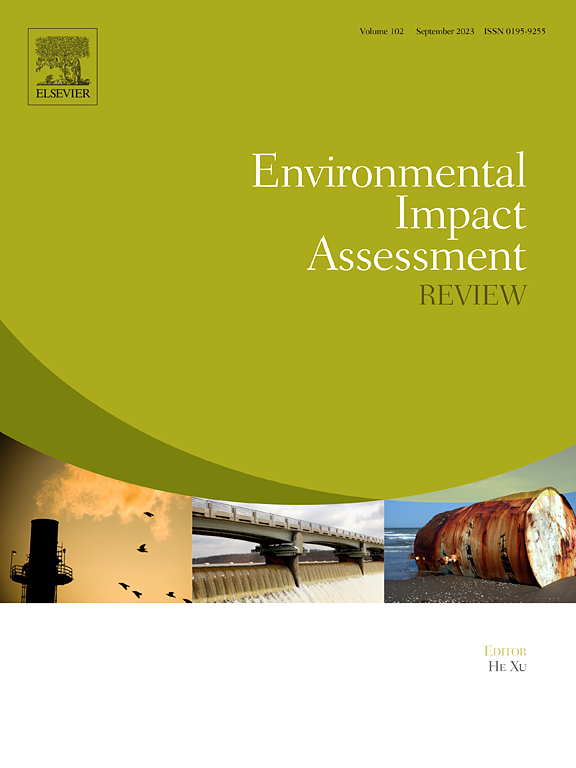棉花和聚酯纺织品管理策略对环境的影响:回收再利用和纺织废料回收的比较
IF 9.8
1区 社会学
Q1 ENVIRONMENTAL STUDIES
引用次数: 0
摘要
纺织部门是对环境影响最大的部门之一,主要是由于产生废物和大规模生产为短期使用而设计的低质量服装。需要管理政策效率来抵消该行业的全球影响。在本研究中,选择t恤作为代表产品,并以意大利作为目标区域,意大利是纺织生产领域的领先国家之一:虽然50%的分类收集的纺织废物被再利用,但只有不到1%的回收利用,大多数是焚烧或填埋。本研究采用生命周期评估(LCA)来评估棉和聚酯t恤在生产、分销、使用和报废阶段对环境的影响。四种情景(棉花基线、聚酯基线、棉花未来、聚酯未来)调查了不同的废物管理策略,包括增加分类收集和纳入回收利用。结果表明,将纺织废料分类收集率从14%提高到40%,并整合回收利用,可以显著减少环境影响,特别是化石消耗(高达24%),气候变化和淡水生态毒性,主要是由于减少了主要材料的需求。然而,聚酯回收增加了水资源的消耗,突出了提高工艺效率的需要。该研究还指出,由于全球纺织品供应链复杂,数据的可追溯性是一个关键问题。此外,评估国界以外的寿命结束影响至关重要,因为纺织废物出口到废物管理不足的地区可能导致对环境和人类健康风险的低估。本文章由计算机程序翻译,如有差异,请以英文原文为准。
Environmental impacts ofcotton and polyester textile management strategies: Comparison of separatecollection for reusing and textile waste recycling
The textile sector is among the most environmentally impactful, primarily due to waste generation and the large-scale production of low-quality garments designed for short-term use. Management policy efficiency is required to offset the global impact of the industry. In this study, T-shirts are selected as a representative product, and Italy is used as targeted area, being one of the leading countries in the textile production sector: while 50 % of separately collected textile waste is reused, less than 1 % is recycled, with the majority incinerated or landfilled. The present study applies a Life Cycle Assessment (LCA) to evaluate the environmental impact of cotton and polyester T-shirts across production, distribution, use, and end-of-life phases. Four scenarios (Cotton Baseline, Polyester Baseline, Cotton Future, Polyester Future) investigate different waste management strategies, including increased separate collection and the inclusion of recycling. Results show that increasing textile waste separate collection rates from 14 % to 40 % and integrating recycling can significantly reduce environmental impacts, particularly fossil depletion (up to 24 %), climate change, and freshwater ecotoxicity, primarily due to decreased primary material demand. However, polyester recycling increases water depletion, highlighting the need for process efficiency improvements. The study also identifies traceability of data as a key issue due to complex global textile supply chains. Additionally, assessing end-of-life impacts beyond national borders is crucial, as the export of textile waste to regions with inadequate waste management could lead to underestimation of environmental and human health risks.
求助全文
通过发布文献求助,成功后即可免费获取论文全文。
去求助
来源期刊

Environmental Impact Assessment Review
ENVIRONMENTAL STUDIES-
CiteScore
12.60
自引率
10.10%
发文量
200
审稿时长
33 days
期刊介绍:
Environmental Impact Assessment Review is an interdisciplinary journal that serves a global audience of practitioners, policymakers, and academics involved in assessing the environmental impact of policies, projects, processes, and products. The journal focuses on innovative theory and practice in environmental impact assessment (EIA). Papers are expected to present innovative ideas, be topical, and coherent. The journal emphasizes concepts, methods, techniques, approaches, and systems related to EIA theory and practice.
 求助内容:
求助内容: 应助结果提醒方式:
应助结果提醒方式:


